The designer’s guide to wellness at work
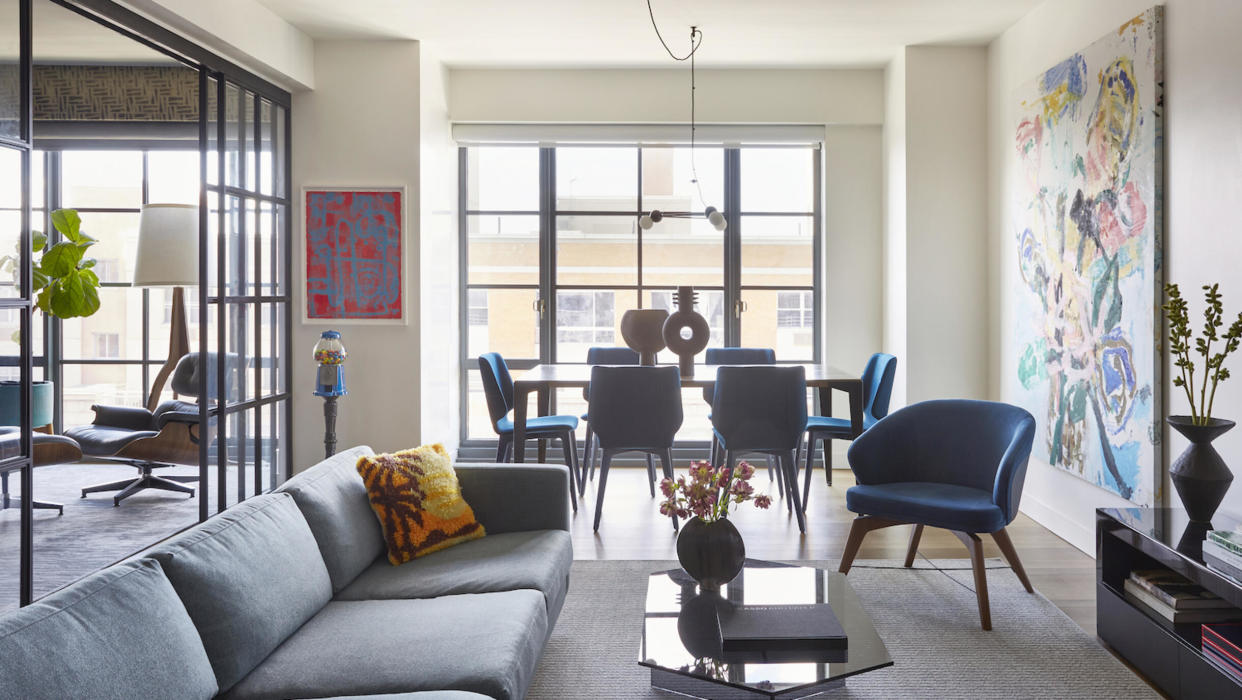
magazine | Jul 13, 2023
Being many things to many people may put designers at risk of putting themselves last. Here’s how to cultivate practices that nourish your mental health on and off the clock.
During the first wave of pandemic lockdowns, French researchers hypothesized that there would be an upside for creative professionals: more productivity. Yet upon studying the habits of more than 1,000 French citizens, the academics were surprised to find no uptick in creative output, something they attributed to a rise in anxiety. Of course, everyone felt anxious during the pandemic—but studies show that it might have been even more pronounced among creatives.
“If there’s been one constant over the last three years, it’s been change, stress and burnout,” says Melody Wilding, a New York–area executive coach and author of Trust Yourself: Stop Overthinking and Channel Your Emotions for Success at Work. “For creative professionals, it’s been especially challenging, because creativity and sensitivity go hand in hand. Sensitive people’s nervous systems are highly attuned to their surroundings, taking in detail and nuance that other people miss. Having your finger on the pulse of your environment is how you get ideas and see opportunities, but it can also be very easy to become overloaded.”
Some designers dedicate 100 percent of their energy to the creative process, delegating the firm’s accounting and logistics to team members. Others enjoy the nuts-and-bolts side of the business, managing finances and people in addition to the design work. But no matter how that balance shakes out, it’s important to keep in mind that being a creative professional comes with unique mental health challenges.
“Creatives have to deal with existential sadness more than the next person,” says Eric Maisel, a Bay Area creativity coach and retired psychotherapist who has studied creativity and mental health for decades. “Creatives often ask themselves, ‘Does my work matter?’ Sometimes it’s hard to believe that the world needs another painting or photograph”—or another beautiful interior.
As the dust settles after the pandemic home boom, it’s completely natural to feel both grateful for and drained by the surge in demand. Before diving into the next phase of growth for yourself and your firm, you can develop a tool kit of expert-generated and research-backed strategies that support and sustain your mental health, inside the office and out. You’re acting as your client’s therapist all the time, and you shoulder so much of the emotional burden of a project—don’t forget to take five for yourself.
WHAT’S YOUR STORY?
The never-ending stream of thoughts that runs through our heads determines how we feel about our lives, our work and ourselves. Recognizing that connection was a transformative discovery for Minneapolis-based Desi Creswell, an interior designer turned life coach who was consumed by feelings of burnout, stress and inadequacy before her own coach helped her see the emotional impact of her thoughts. Those teachings allowed her to regain confidence, calm and clarity, and she now specializes in helping other designers make the same empowering leap—one that starts with acknowledging that your thoughts aren’t universally shared facts but subjective beliefs driven by your own experiences. “If you don’t untangle your stories, that will dictate how you show up in your business, whether it’s serving you or not,” she says. “If you don’t recognize that you filter your experience through your specific lens, your emotional well-being and behaviors will appear to be at the whim of everything going on around you instead of you being in control. When you feel disempowered, you can’t effectively manage, market or hit bigger goals.”
You won’t be shocked to learn that money issues are some of the most common emotional triggers Creswell sees in her work with designers. Charging higher fees, selling higher-end product and requiring upfront payments all tend to be loaded topics. Some of her clients fall into the trap of projecting their own financial beliefs or expectations onto clients (like, “If I wouldn’t spend more than $10,000 on a sofa, no one would!”), or confuse their personal worth with what they charge as an hourly rate. Beyond finances, employee management and client communication can also be triggering territory and, if not managed well, can mess with productivity or weaken relationships.
“When you are in a heightened emotional state—for example, you realized you missed a detail on an order, multiple deadlines are overlapping or a client comments on an invoice—the primitive part of your brain, the amygdala, takes over,” says Creswell. “Science shows that [in those situations] the problem-solving parts of your brain actually reduce their capacity to function because your amygdala is signaling an automatic response to try to protect you from threats. That means you’re basically trying to solve complex situations with the brain of a toddler.”
Creswell helps designers work through emotional triggers by adopting a curious, nonjudgmental mindset and helping them separate fact from fiction. “A great question to start with when you’re feeling triggered is, ‘What am I making this mean?’ If a client made a comment about an invoice, for example, the ‘fact’ is that you got an email from Client A with the words, ‘That’s more than I anticipated,’ while your story might be, ‘I’m not worth that much,’ or ‘These clients are so entitled.’ That perspective alone can be a game changer. Once you’re calm, you can access new ideas and solutions.”
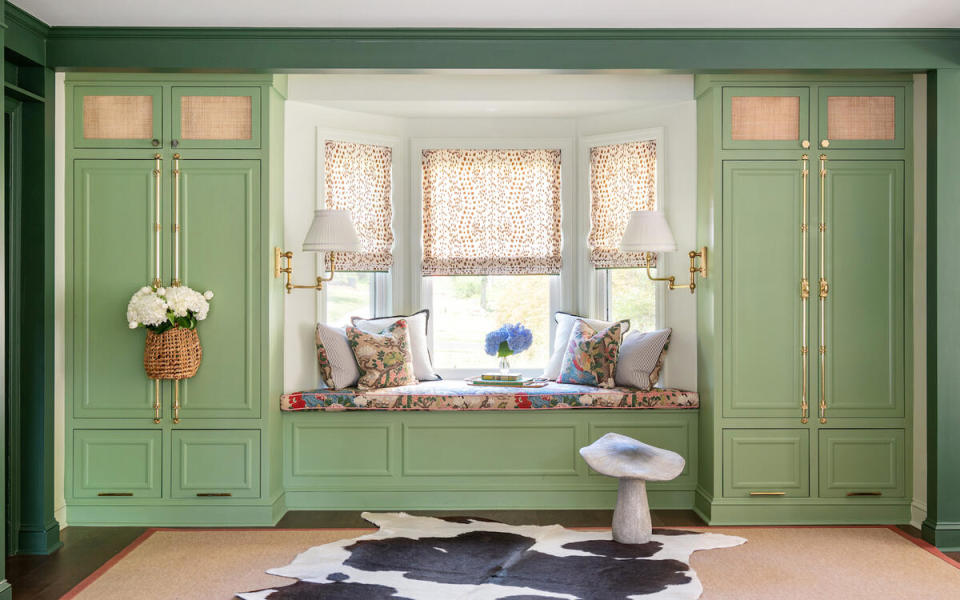
THOUGHT EXPERIMENT
While you should absolutely take your mental health seriously, that doesn’t mean every mood-boosting technique is serious. Visualization is a playful and imaginative way to focus your thoughts through mental imagery, an exercise that both Wilding and Maisel suggest for creatives. In Maisel’s most recent book, Redesign Your Mind: The Breakthrough Program for Real Cognitive Change, he offers an approach that’s particularly apropos for designers: envisioning your mind as a room, then using the process of redecorating the space you’ve imagined as a metaphor for transforming negative or limiting thoughts and beliefs.
“We experience our mind as a place we go to, a place we can see,” says Maisel. “There are things we can do when we get there that will be instantly beneficial to how we live and think.” A few examples: If you’re feeling anxious or uncomfortable, envision placing a deep, plush, pillowy sofa in a cozy nook of your mind’s interior. Or if you’re feeling creatively stuck or unmotivated, try painting the walls a vibrant hue and throwing open the windows to an inspiring view (a Parisian park in full bloom is what sprung to mind for this writer).
Sound silly? That’s the point! Unlike real-life interiors, your mind is a space free of practical limitations like client preferences, budgets and shipping delays. Best of all, you can change the decor scheme on a whim, based on your mood or needs. And even if you’re less excited about decorating an imaginary space than a real one, Maisel emphasizes that visualization is a powerful tool, particularly when wielded by creatives. “If you do any exercise of this sort, you’re helping yourself,” he says. “Visualization can help reduce anxiety, increase calm and address other challenges that creatives face.”
Beyond the mind-room exercise, there are other visualization techniques that can fight everyday stress. If you’re struggling to shake off a work mistake or tough conversation, Wilding suggests a couple of effective images: “Picture your worries as clouds drifting away, or as leaves floating down a stream,” she suggests. Different things work for different people, so play around and see what happens—if you find yourself feeling even an iota lighter afterward, you’ll know your visualization is working.
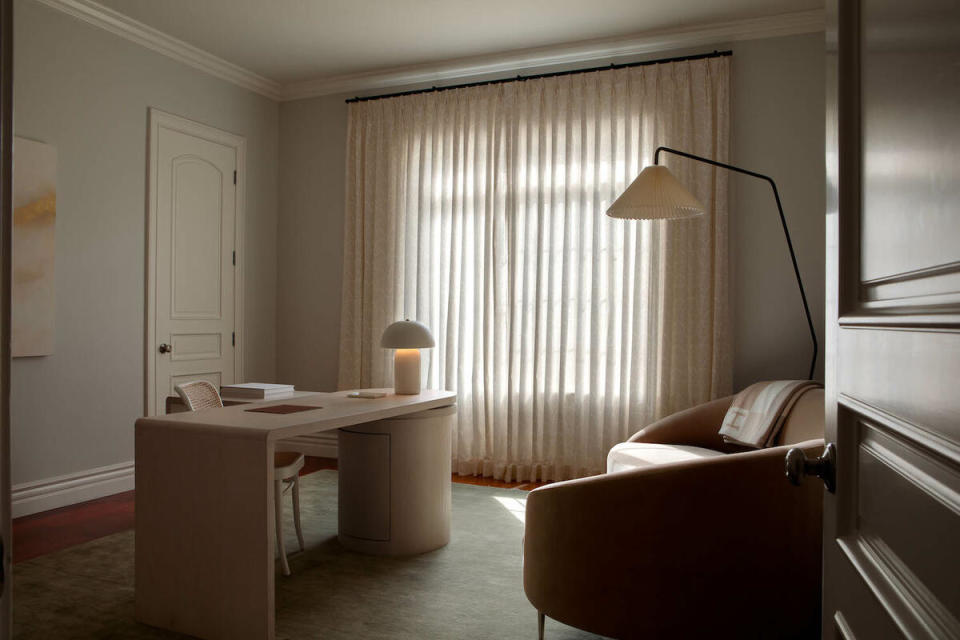
BESPOKE BOUNDARIES
Loving your work is a great thing. It can also make it a little hard to unplug—especially if you’re running your own business. If you sometimes find it challenging to draw a line between the personal and professional—befriending clients or going through all-consuming work phases—you’re in good company. Not only are these experiences normal and natural, new research shows that entrepreneurs can actually thrive in such conditions.
If those findings sound counterintuitive, it’s because previous studies have linked entrepreneurship to burnout. But research recently published in the Journal of Business Venturing indicates that entrepreneurs may actually experience less job burnout than traditionally employed people, with solo entrepreneurs faring best of all. That may be because self-employment means both more freedom and fewer of the demands that often lead to burnout, like role ambiguity and time pressure. (That’s under average working conditions. All bets are off during a crisis like, you know, a global pandemic.) And although entrepreneurs may indeed find it harder to disconnect from work during free time, the study also found that their mental health generally doesn’t suffer as much as typical employees from staying connected to their work, likely because they’re more in control of how they work.
For designers who run their own firms, that’s not a permission slip to let your job take over your life—but it does mean that you can be flexible and creative about boundary-setting. For one designer, texting with clients on nights and weekends might feel organic and effortless, while another might need to implement a communication break. Likewise, where one designer thrives on becoming deeply familiar with clients, another might need more of an emotional buffer. “You can have very rigid boundaries, almost like a brick wall, where nothing can get in or go out, or you can have very porous boundaries,” says Wilding. “Every person needs to straddle that line for themselves, but healthy boundaries [tend to land somewhere] in the middle, so that we’re able to show up and empathetically connect with people in a way that we feel comfortable with. That means we’re not taking their emotions home with us, or allowing other people’s opinions, approval or disapproval to override our own judgments and decisions.”
Just as you update your client contract as you learn more with each project, your boundaries can evolve too. “You make your best guess, but you have to feel your way through it,” says Wilding. “It’s a constant process of checking in to ask yourself whether something feels right and using your emotions as a guide.”
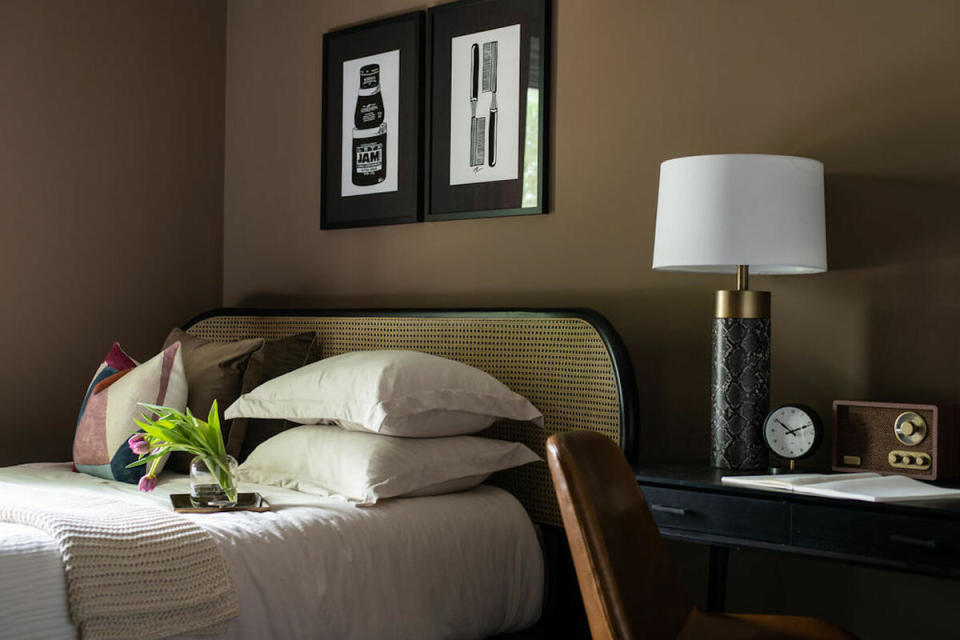
NEXT-LEVEL LEISURE
You already know that it’s healthy to have hobbies and interests outside of work. But new research shows that there’s a specific kind of hobby that’s most beneficial. According to a 2020 study published in Frontiers in Psychology, CEOs who devoted time to “serious leisure”—which is defined as the goal-oriented pursuit of a nonwork passion—experienced a boost in happiness, confidence, personal growth and energy, among other mental health benefits.
The more effort you put into serious leisure (emphasis on serious), the better it is for you. While you might think of the occasional yoga class or chess game as a relaxing retreat from work, serious leisure requires a combination of long-term effort and perseverance—an activity that becomes a key part of your personal identity. Whether it’s an instrument, a craft or a sport, the intensity and challenge of serious leisure may be uniquely able to help business leaders unplug and express themselves outside of work. “Serious leisure is a great ally for a leader in stressful times, offering more benefits than taking time off,” says study author Emilia Bunea, a leadership scholar at Vrije University in Amsterdam. “It forces you to detach from work, which replenishes self-confidence and energy.”
If the idea of adding something else to your already-full plate feels laughable, suspend your disbelief for a minute and consider reframing the matter. “We should not focus on time as a resource that we need to optimize, but instead on energy,” says Bunea. “A passionate leisure pursuit is a big source of personal energy, so you will find time for it. The difficulty is not how to find time for a passionate pursuit—that will take care of itself—but how to find time to become passionate about a pursuit.”
Not sure where to start? Consider activities you liked during adolescence, interests you share with your family, a sport, or something you’re naturally drawn to but haven’t carved out enough time for. It’s best to seek out passions that are different from your day-to-day work, notes Bunea, as they offer the potential for you to become the best in your particular intersectional niche—which is “the shortest route toward developing passion,” she explains. “If you take up jujitsu, you might not ever be the best jujitsu practitioner in town, but you could become the best interior design CEO–female-jujitsu-er in town. That’s why choosing a hobby close to your work might not be great: It may be more difficult to become the best interior design CEO–antiques collector.”
RITUALIZING SELF-CARE
Whatever strategies for self-care resonate with you, sticking with them is what makes the difference. Fortunately, dedication typically comes naturally to high achievers of the sort who might run their own design firm. “More than other personality types, high performers really make self-care a routine,” says Jennifer Musselman, a California-based licensed psychotherapist and executive coach. “They’ve implemented habits that are aligned with who they are, and they keep those habits on a schedule. It’s structured and memorialized, becoming more about who they are than what they’re doing.”
Still, even the most diligent leaders need support figuring out how best to integrate feel-good practices into their life. Musselman often helps her clients create the routines that work for them, carving out dedicated time for pursuits that fill their cup, whether that’s therapy, exercise or meditation. She also recommends assessing the flow of your average workday and tweaking it to avoid falling into time- and energy-sucking traps. It might seem like a no-brainer, but don’t forget that you have the power as principal to design a workday that’s tailored to your productivity. “If you know that you lose your focus and become irritable at the tail end of one-hour meetings, cap them at 45 minutes instead,” she says.
For high-achieving individuals, it’s especially important to seek out moments when you can give back to yourself, because performing a leadership role at work puts you in a position of giving to everyone else for hours on end. “Everyone needs something from leaders,” says Musselman. “It’s take-take-take all day long, so it’s crucial to give yourself 20 to 30 minutes per day when you step away from anyone who needs anything from you, including the emails and texts you get on your phone.” Leave it behind and go for a walk—the work will be waiting when you get back.
Individually, these rituals might seem insignificant, but collectively, they add up. By preserving pockets of time where you put yourself first, you’re not only boosting your baseline mood in those moments—you’re also ensuring that you’ll notice when you start to feel off, allowing you to address any problems before they become critical. “Monitoring your mood is important,” says Musselman, who suggests using an app or old-fashioned notebook to record your emotions and track any changes. “If you’re feeling low-grade depression more often than not over a two-week period, you need to pay attention to that and seek additional support, like a therapist. Also note other habits, like drinking too much or feeling chaotic or disorganized. Getting to know yourself better and noticing patterns helps inform cognition of what’s going on, and helps you set up your life in a way that’s more meaningful, fulfilling and productive.”
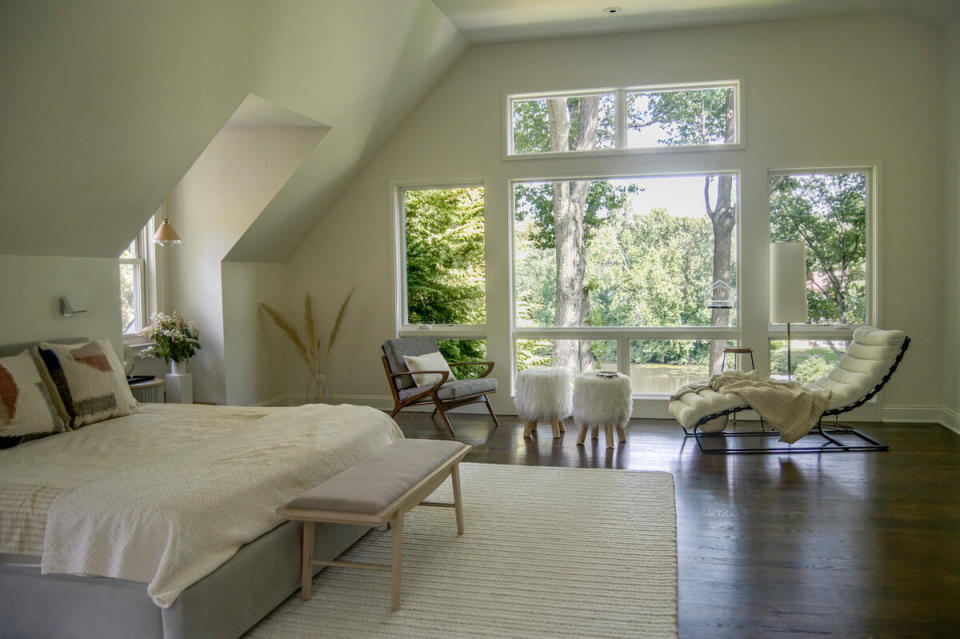
SURRENDERING TO THE PROCESS
Much like you can’t control everything that happens with a project, you can’t control every aspect of your mental health—you can only set yourself up for success and then loosen your grip. You might implement every proactive self-care strategy in the book and still find yourself losing sleep over a stressful client conversation or a procurement error. That’s OK.
“It’s human to have difficult or worrying thoughts,” says Wilding. “It’s built into our wiring to overthink. If you try to ignore those thoughts, they’ll come back stronger because your brain is trying to get your attention. Your mind is a problem-solving machine—it wants to close the loop, so it will keep thinking about a problem until it’s solved.”
Above all, try to practice gratitude for your emotions whenever you can, even if the tough ones sometimes feel like a plague. If you can relax and listen, those feelings will provide you with valuable intel. “Emotions really do give us signals or directions for our behavior,” says Wilding. “So we might as well use them to our advantage.”
Boss in the Making
Still early in your design career? Even if you can’t yet make your own schedule or turn down a toxic client, you can take charge of your mental health in other ways.
CONSERVE YOUR ENERGY
It’s your biggest natural resource, so use it wisely. “We have only so much energy in a single day,” says Jennifer Musselman, a California-based licensed psychotherapist and executive coach. “People in budding career stages are exerting a lot of energy trying to attend every networking event or fit in, in ways that aren’t always healthy or helpful to achieving long-term goals.” There’s nothing wrong with exploring or connecting, but when you’re doing it to the exclusion of other good-for-you necessities like downtime or exercise, it’s time to reassess your priorities.
DIVERSIFY YOUR PASSIONS
According to Amsterdam-based leadership researcher Emilia Bunea, the earlier you discover a serious leisure activity that captures your heart and attention, the more benefits you’ll reap—so don’t wait until your work-life balance is so off-kilter that you’re desperate for a nonwork outlet. “If you’re already close to burnout and overwhelmed, it’s too late to start thinking about a serious leisure interest,” says Bunea. “Consider adopting one as a recipe for a healthy life, rather than as ‘treatment’ for a particular problem.”
TUNE IN TO YOUR GUT
The sooner you practice listening to your intuition, the better you’ll become at using it as a guide for actions and behaviors that will best serve you. “Scientific literature shows that intuition is basically the repository of all our experiences, data and patterns we’ve gathered about the world, creating a kind of library for us to draw on,” says Melody Wilding, a New York–area executive coach. “Many of us push that instinct and intuition down because we’ve been told we’re overthinking it—but it’s a muscle we need to rebuild and reconnect with.”
This article originally appeared in Spring 2023 issue of Business of Home. Subscribe or become a BOH Insider for more.

